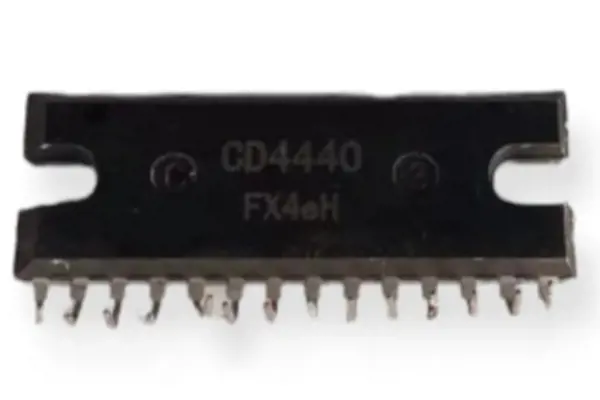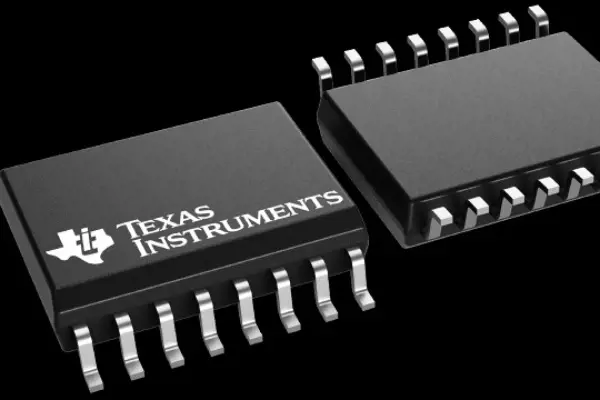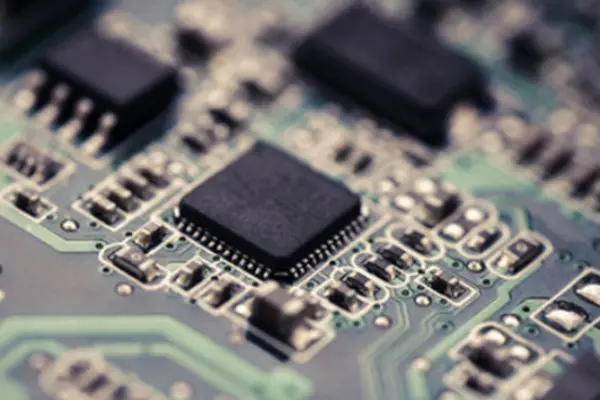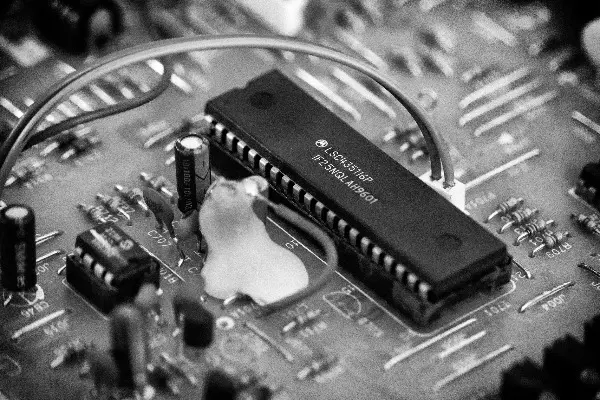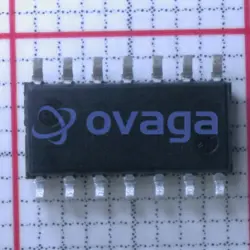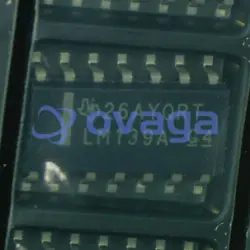Counters in Digital Electronics
Update Time: Sep 04, 2023 Readership: 1242
Contents
Introduction
Digital electronics play a vital role in today's technology landscape. With the rapid development of computer technology, communication systems and embedded systems, digital electronics has become the foundation of modern society. This field deals with the processing, storage and transmission of digital signals, as well as the design and optimization of digital systems. In digital electronics, a counter is a vital component that plays an important role in a variety of applications. This article mainly discusses the importance, types, principles and applications of counters in digital electronics.
What are Counters in Digital Electronics
In a digital system, in order to achieve accurate measurement, efficient operation and precise control, it is often necessary to count electrical pulses quickly and accurately. In this case, a very important component is the counter in the sequential logic circuit.
A counter is a sequential logic circuit that can accumulate the number of input pulses. It can be used not only to count the number of clock pulses, but also to perform various tasks such as frequency division, timing, generation of precise time ticks and pulse trains, and even number crunching. In digital electronics, a counter is a versatile tool that provides essential support for the proper operation and performance of digital systems.
Types of Counters in Digital Electronics
Counters are important components in digital electronics that count and track the number of events, pulses or signals. They can be classified according to different criteria, including their type, working principle, counting mode, etc. Following are some common types of counters.
Asynchronous or ripple counters in digital electronics
Synchronous counters play an important role in digital electronics, and their precise synchronization and suitability for high-speed applications make them the preferred choice in many fields.
Logical Diagram
-
Clock Synchronization
One of the key features of synchronous counters is their strict clock synchronization. In a synchronous counter, the state change of each flip-flop is associated with the same edge of the clock signal. This ensures that the various stages of the counter are updated at the same instant, providing highly reliable and accurate counts.
-
High-speed applications
The precise synchronization of synchronous counters makes them ideal for high-speed applications where precise counting and time measurement are required. For example, it is used for bit error counting in high-speed communication systems, packet counting in network switching devices, and time measurement in high-performance computing.
-
Design Complexity
While synchronous counters are very advantageous in providing high-precision counting, their design is relatively complex. Engineers need to carefully consider issues such as clock distribution, signal propagation delays, timing constraints, and timing closure to ensure proper operation of synchronous counters. This requires in-depth timing analysis and design experience.
-
Modular design
In order to reduce the design complexity of the synchronous counter, a modular design method is usually adopted. This breaks down the counter into stages, each consisting of a flip-flop and appropriate logic. This modular design helps reduce the risk of errors and simplifies the overall design process.
- Number of digits of the counter
The synchronous counter can realize the counting of different digits according to the needs. Higher-bit counters can handle larger count ranges, but add design and timing complexity.
-
Application examples
Frequency measurement in electronic communications, time measurement in high-performance computing, data acquisition in instrumentation, and control and monitoring in automation systems.
Synchronous counters in digital electronics
Asynchronous counters are suitable for low-speed and simple counting and control tasks. However, when designing and using, timing issues need to be carefully considered to ensure stability and reliability.
Logical Diagram
-
Simple design
The design of the asynchronous counter is relatively simple and does not require complex clock distribution and timing control circuits. Each flip-flop requires only one input signal to trigger a state change, which makes them especially useful for some basic counting tasks.
-
Asynchrony
The flip-flops in an asynchronous counter are not controlled by the same clock signal, they can transition state independently in response to changes in the input signal. This asynchrony can create flexibility in some specific applications, but it can also cause timing and stability issues. Therefore, designers need to pay special attention to avoid potential hazard phenomena, such as timing hazards and state races.
-
Low-speed applications
Due to their asynchrony and simplicity, asynchronous counters are often used for low-speed counting and basic control tasks. Examples include counting fractions in video games, state machines in traffic light controllers, and counting numbers in simple digital displays.
-
Preset function
Some asynchronous counters have a preset function that allows an initial value to be set before counting begins. This is very useful for some specific counting and control applications, such as presetting the initial time in a countdown timer.
-
State Machine
The structure of the asynchronous counter can also be used to implement a state machine. State machines are common components in digital systems that control the transitions of multiple states and events.
-
Low-power applications
Due to their asynchronous nature and simplicity, asynchronous counters are also used in some low-power applications, such as counting tasks in battery-operated mobile devices.
Binary counter in digital electronics
A binary counter is a circuit that counts according to the operation rules of binary numbers. Despite their relatively simple structure, they have broad and important applications in digital electronics. A binary counter is one of the most widely used basic logic devices in digital systems. It can not only accurately record the number of input clock pulses, but also realize various functions, including frequency division, timing, generation of beat pulses, and creation of pulse sequences. . The simplicity and flexibility of this counter makes it one of the core elements in digital systems.
The digital circuit that counts based on the binary encoding rule with the state transitions of each flip-flop under the action of counting pulses is called a binary counter. The core components that make up the counter circuit are JK flip-flops with counting functionality. JK flip-flops can be connected to form a counting state, as shown in the diagram:
Binary counters are a common counter type in digital electronics and can be further classified according to different characteristics and functions.
According to the different classification of clock pulse input method
-
Synchronous Binary Counter
A synchronous binary counter is a counter in which all flip-flops are controlled by the same clock pulse. This means that at the same instant, all flip-flops transition state simultaneously, ensuring precise synchronicity of counting. Synchronous counters are suitable for applications requiring high-precision counting, such as high-speed communications and precision instruments.
-
Asynchronous Binary Counter
Each flip-flop in an asynchronous binary counter is not controlled by the same clock signal, and they can independently perform state transitions according to changes in input pulses. This asynchronous nature allows asynchronous counters flexibility in some low-speed and basic counting tasks. However, special attention needs to be paid to timing analysis and stability due to potential timing issues.
According to the different classification of the carry system
-
Binary counter
The binary counter counts according to the binary system. Whenever the flip-flop changes from "1" to "0", the next flip-flop will be triggered. This is the most common type of counter and is suitable for most applications in digital systems.
-
Non-binary counter
Non-binary counters count using a base system other than binary, such as decimal or octal. These counters are typically used in applications that require direct interaction with other digital representations, such as digital displays and BCD code conversions.
According to the different classifications of the trend of increasing and decreasing numbers during the counting process
-
Up counter
An up counter is the most common type of counter and counts up in a fixed order. After each clock pulse, the count value is incremented by one bit or a fixed number. Adding counters are widely used for timing, frequency measurement, and data sequence generation.
-
Down counter
A down counter is the opposite of an up counter, it counts in descending order. After each clock pulse, the count value is decremented by one bit or a fixed number. Down counters are useful in countdown tasks such as countdown timers and countdown stopwatches.
-
Up-down counter
Up-down counters have more flexibility and can be incremented or decremented as needed. This counter type can be used in both forward and reverse counting applications and is suitable for scenarios that require counting in both directions, such as motor control and position feedback systems.
Up down counter in digital electronics
A reversible counter has the ability to count forward and reverse. This kind of counter combines the functions of the addition counter and the subtraction counter, and realizes forward and reverse counting through appropriate logic control of carry and borrow pulses. It usually has a reset terminal, an up counter terminal and a down counter terminal. During work, in the initial state, or when the reset terminal is in the ON state, the value of the counter is 0, and no counting operation is performed. When the reset terminal is in the OFF state, the counter allows counting operations. When the positive counting terminal is switched from OFF to ON, it will count forward, and the value of the counter will increase by 1; when the counting terminal is switched from OFF to ON, it will count backward, and the value of the counter will be decremented by 1.
Application of Counters in Digital Electronics
Counters are versatile tools in digital electronics, providing essential support for the proper operation and performance of digital systems. Whether employed for time measurement, data processing, frequency control, or control systems, counters have a wide array of applications in the field.
-
Timing and Frequency Measurement
Counters can be used to measure time intervals and signal frequencies. By counting the number of input pulses, precise measurements of time intervals between events or signal frequencies can be obtained, which is crucial for accurate timekeeping and frequency analysis.
-
Dividing and Frequency Synthesis
Dividers, a special type of counter, are used to divide high-frequency signals into lower-frequency ones. This is prevalent in digital systems for clock division, frequency synthesis, and digital signal processing.
-
Event Counting
Event counters are employed to keep track of the number of specific events. They find extensive use in quality control, security systems, and monitoring applications. For instance, counting faults on a factory production line or vehicles at a traffic signal.
-
Signal Generation and Modulation
Counters can generate pulse sequences of specific frequencies, essential for frequency modulation, pulse coding, and data transmission in communication equipment.
- Timing and Control
Counters can generate precise time delays, facilitating control over signal generation and triggering. Examples include timing control, PWM (Pulse Width Modulation) generation, and periodic event triggering.
-
Data Sequence Generation
Counters can be employed to produce various digital sequences. This is useful in digital signal processing, random number generation, encoding and decoding, and data pattern generation. For instance, counters can be used to generate pseudorandom code sequences in communication.
-
Frequency Locking
Counters can be used to lock onto the frequency of an input signal, a common practice in communication and RF (Radio Frequency) applications to maintain a stable signal source frequency.
-
Digital Arithmetic
In certain applications, counters can perform simple digital arithmetic operations such as addition or subtraction, proving useful in specific control applications and computational tasks.
-
Pulse Width Measurement
Counters can measure the width of pulse signals, which is crucial in communication, radar, and measurement equipment.
Extended Reading
 FAQ
FAQ
-
What is the difference between synchronous and asynchronous counter?
Synchronous counters use a common clock signal for all flip-flops, ensuring simultaneous state changes and precise synchronization. They are suitable for high-speed applications. Asynchronous counters have individual clock signals for each flip-flop, causing sequential state changes with potential timing issues. They are simpler to design and are often used in lower-speed applications where synchronization is less critical.
-
What is the difference between an up and down counter?
Up counters count upward from a starting value, while down counters count downward from an initial value. The choice between the two depends on the specific requirements of the application, such as the desired counting direction and the nature of the task being performed. Some counters can even operate bidirectionally, allowing both up and down counting based on control inputs.
-
How many types of counters are used in digital circuits?
Asynchronous Counters, Synchronous Counters, Up Counters, Down Counters, Bidirectional Counters, Modulus Counters, Decade Counters, Ring Counters, Johnson Counters, Gray Code Counters, BCD Counters, Parallel Counters, Up/Down Counters
-
What is the difference between register and counter?
Registers are used for data storage and manipulation, while counters are used for counting events and generating sequences of numbers.
-
What is an example of a counter in electronics?
Digital clocks, Electronic device timers, Frequency counters, Analog-to-digital converters, Frequency divider circuits
-
What is a counter in digital electronics?
A counter is an electronic device that records and displays the quantity of an incoming signal. It is usually composed of flip-flops and logic gates, and counts and displays the number of events that occur by counting and transitioning input signals. The counter can set the initial value as needed, and update the count value when each input signal arrives, so as to realize the accurate counting of the number of events.
Popular Blogs
-
![CD4440 IC: Datasheet, Amplifier Circuit Diagram, Pinout]()
CD4440 IC: Datasheet...
The CD4440 IC is a stereo audio power amplifier ...
-
![Small Outline Package (SOP): Definition, Applications and Advantages]()
Small Outline Packag...
SOP (Small Outline Package) is a type of integra...
-
![Advantages and Disadvantages of Operational Amplifier (Op-amp)]()
Advantages and Disad...
Operational amplifiers, or op-amps, offer a host...
-
![Dual Inline Package Meaning]()
Dual Inline Package ...
Dual in-line package, also known as DIP package ...



